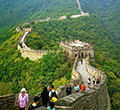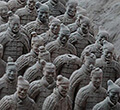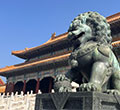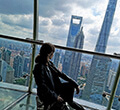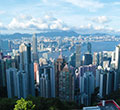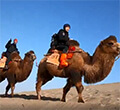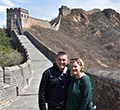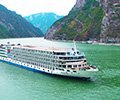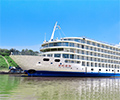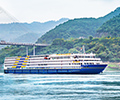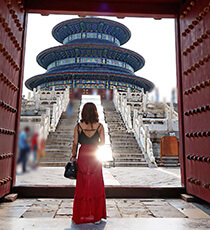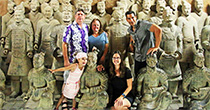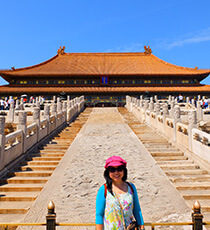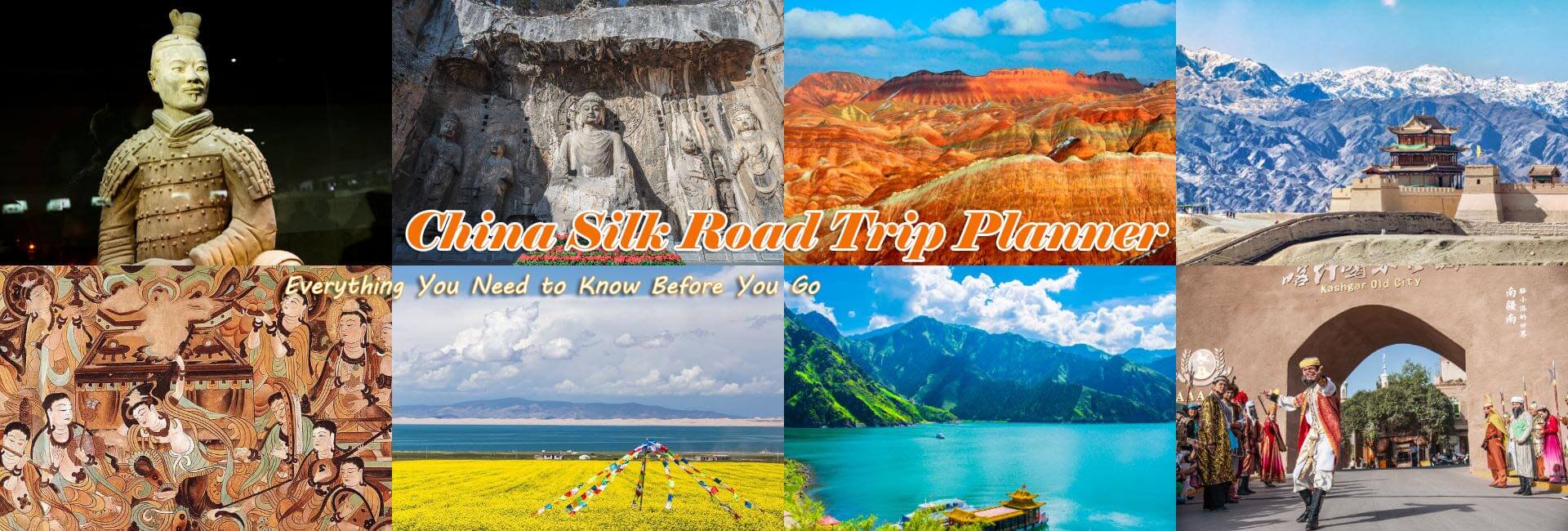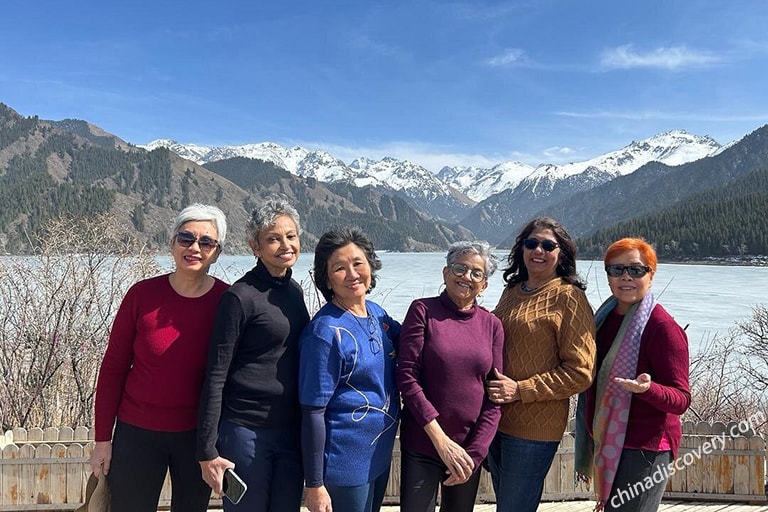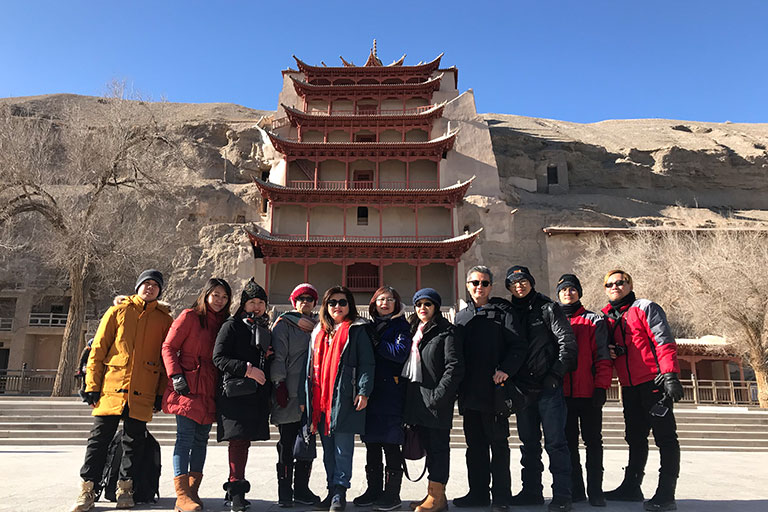How to Plan a China Silk Road Travel - Ultimate China Silk Road Trip Planner 2025/2026
More than 2,000 years ago, ambassador Zhang Qian of the Western Han Dynasty blazed a trail between ancient China’s Central Plains and the Western Regions. In the following dynasties, many routes and branches to farther and more places got developed, and turned the ancient Silk Road into an important and bustling international trade route. With abundant time-honored historic sites and cultural treasures, nowadays, the Silk Road is a charming and mysterious travel route that attracts travelers all over the world. Whether you’re interested in the Silk Road history or landscape along it, there are indeed lots of details to know when planning your trip to the Silk Road regions in China, such as where to go, what to do, which transport is the best, when is the best time to go, etc. Here China Discovery specially offers useful China Silk Road Travel Guide to help you design an ideal Silk Road trip itinerary.
The ancient Silk Road of China started from Chang’an (today’s Xian), Luoyang (Henan), passed Ningxia, Gansu (Hexi Corridor), Qinghai to northwest China’s Xinjiang, spanning thousands of kilometers and linking dozens of cities.
◆ Luoyang - Great Ancient Capital City: Luoyang in western Henan is a great ancient capital of China for 13 dynasties, the center of the Grand Canal and one of the birthplaces of Chinese civilization. During the Eastern Han Dynasty, Luoyang was the capital of China and a prosperous cosmopolitan city in the world, which received envoys from ancient Rome and traders worldwide, and promoted exchanges of goods, religions and cultures. The highest achievement belongs to cultural communication of Buddhism, and two best treasures are Longmen Grottoes - the best stone carving grotto work of China and White Horse Temple - the first Buddhist temple in China. Learn more >>
◆ Xian - the Starting Point of the Silk Road: Xian, (former name: Chang’an), only 1.5 hours’ high speed bullet train travel from Luoyang, is a world-famous historical city and the home to the UNESCO World Heritage site - Terracotta Warriors. The city was the original starting point of the ancient Silk Road and a flourishing capital of China for 13 dynasties. Therefore, Xian is a land of historic sites and cultural fusion related inheritances. Apart from the magnificent Terracotta Army, Xian’s cultural highlights include the Ancient City Wall, Bell & Drum Towers, Muslim Quarter, Giant Wild Goose Pagoda and so on. Learn more >>
◆ Ningxia - Connection between Xian and the Hexi Corridor: Located between Shaanxi and Gansu, Ningxia is a vital station on the ancient Silk Road, and it was the seat of the Western Xia Kingdom (1038 ~ 1227 AD). It has preserved some historic sites for exploring the past glorious history and marks of cultural exchanges on the Silk Road, such as the Xumishan Grottoes, Western Xia Emperors’ Tombs, etc. Meanwhile, Ningxia has a variety of complex topography, covering plateau, plain, mountains, rivers, lakes and gobi desert. Helan Mountains and Shapotou Desert are the most famous symbols. As China’s largest wine region, Ningxia still has many good wineries to taste and learn premium Chinese wine.
◆ Tianshui - Stunning Grottoes Gallery: Tianshui is the birthplace of Emperor Fuxi (ancestor of Chinese civilization) and a vital town on the ancient Silk Road. The most famous cultural legacy is the Maijishan Grottoes - one of the Four Greatest Buddhist Grottoes in China. Fuxi Temple, built to worship Emperor Fuxi, is a remarkable ancient architectural complex of the Ming and Qing Dynasties.
◆ Lanzhou - Gateway to Northwest China & Coastal City of Yellow River: Lanzhou was a traffic key-point to the Western Regions on the ancient Silk Road where Marco Polo, Zhang Qian, many ancient adventurers and travelers all visited. Gansu Provincial Museum in central Lanzhou has knowledgeable exhibitions of Gansu and the Silk Road. Dozens of miles of landscape along the Yellow River with modern buildings, traditional temples and local life scenes are worth a visit too.
◆ Zhangye - Magical Rainbow Mountains: Zhangye was a strategic city to further Western Regions in history. Zhangye Danxia Geopark with amazing colorful Danxia hills is the most famous attraction in Zhangye. The profound history and culture of Zhangye can be found in Matisi Grottoes on the cliffside and Dafo Temple with China’s largest indoor clay reclining Buddha and precious Buddhist Sutras. Learn more >>
◆ Jiayuguan - the First & Greatest Pass of China Great Wall: Jiayuguan City in the middle of Hexi Corridor was a crossroad on Silk Route and a major frontier battle filed. The landmark - Jiayuguan Pass is the westernmost fortress of the Great Wall of the Ming Dynasty as well as the largest and greatest one. Besides, you can learn China's Great history in the Great Wall Museum and visit the less-known Overhanging Great Wall in Jiayuguan. Learn more >>
◆ Dunhuang - the Oasis with the Finest Buddhist Art Treasury: Dunhuang is the home to the world-renowned Mogao Caves, Yumen Pass & Yangguan Pass of the Han Dynasty. The richest and largest amount of Buddhist murals and sculptures of Mogao Caves show the fantastic religious communication of the East and the West. Another dramatic fascination is the Crescent Spring surviving in the wild and barren desert of Singing Sands Mountain. Dunhuang suburbs and surrounding areas have more historic sites and unique landforms to venture. Learn more >>
◆ Qinghai - Amazing Plateau Scenery: There were some sections of ancient Silk Road that went through Qinghai from Xining, via Qinghai Lake to Qaidam Basin. Xining remains different religious and ethnic cultures brought by the road, such as Kumbum Monastery, Dongguan Mosque. Beautiful Qinghai Lake is the No.1 must-visit. In remote areas of Qinghai, there is authentic Tibetan culture and primitive landscapes. Learn more >>
◆ Turpan - the Door of Xinjiang: Turpan, where the Cheshi Kingdom and the Gaocheng Kingdom were located, served as an important gateway to the Western Regions on the ancient Silk Road. It has World Cultural Heritage sites - Jiaohe Ancient City, Gaocheng Ancient City and main attractions like Bezklik Thousand Buddhas Caves, Flaming Mountains, Grape Valley, Kumtag Desert and Karez System. Learn more >>
◆ Urumqi - Window of Xinjiang’s Culture & History: Urumqi was a busy international trade center on the northern Silk Road. The Heavenly Lake of Tianshan Mountains near Urumqi has charming natural scenery. The Regional Museum in the downtown area introduces the splendid culture and long history of Xinjiang. International Grand Bazaar reproduces the hectic trades of the ancient Silk Road. Learn more >>
◆ Kucha - the Earliest Buddhist Grottoes in China: Kucha (Kuqa) is where the ancient Qiuci Kingdom existed and thrived and many cultures met and mixed. Here is Kizil Caves - the first Buddhist Grottoes in China, Gaha Beacon Tower and Subash Ruins, three World Heritage properties. Learn more >>
◆ Hotan - A Flourishing Trade Center on Southern Silk Road: Hotan, the ancient Yutian Kingdom and Jingjue Kingdom, was a major border trade center on the southern route of the ancient Silk Road. It is rich in Hotan jades, which together with Hotan carpet and Adilis Silk are the three famous treasures. Major highlights are the Niya Ruins and the spectacular highway through the Taklamakan Desert - the world’s largest desert. Learn more >>
◆ Kashgar - A Living Cultural Museum of Xinjiang: Two major Silk Routes once joined in Kashgar and brought Kashgar diverse culture, religions and people. Kashgar Old Town is a living fossil with both old residences and an authentic and alive ethnic lifestyle. Travelling from Kashgar to Tashkurgan, Hotan, Kucha and other destinations in Xinjiang and neighboring countries is doable. Learn more >>
Keep Reading: Popular Xian Tours | Luoyang Tours | Gansu Tours | Qinghai Tours | Xinjiang Tours
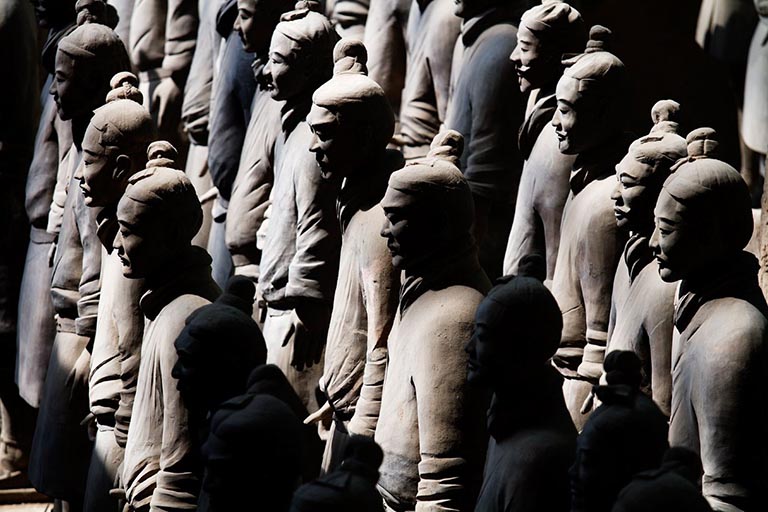
Xian Terracotta Warriors ©走走-74511940 / ctrip

Ningxia Shapotou Desert ©意识散 / mafengwo

Zhangye Rainbow Mountains ©俞晨 / ctrip

Dunhuang Mogao Caves ©Dunhuang Academy China

Heavenly Lake of Tianshan ©泽熙seacen / mafengwo

Kashgar Old Town ©骆小洛的世界 / mafengwo

Our customers Cameron Family from New Zealand visited Terracotta Warriors in Xian in July, 2021.

Our customers Lili's family from German visited Singing Sands Mountain in Dunhuang, Gansu in July, 2021.
Explore Different Historic & Cultural Sites: From the easternmost Luoyang, Xian to the west end of Xinjiang, there are numerous historic and cultural sites to explore, and ancient sites and Buddhist temples & grottoes of different dynasties are the main attractions. Top Silk Road historic sites include Xian Terracotta Army, Dunhuang Mogao Caves, Kashgar Old Town, etc. More about Xian Historic Site >>
Admire Diverse Natural Beauties and Spectacles: There are a wide variety of geological landscapes scattered along the Silk Route, ranging from breathtaking plateau lakes, high mountains, vast deserts, primitive forests, twisting rivers, grand basins, etc. Zhangye Rainbow Mountains, Qinghai Lake, Heavenly Lake of Tianshan Mountains, Dunhuang oasis, Karakul Lake in Pamirs are among the most eye-catching sights.
Experience Multiculture of Minority Groups & Religions: Silk Road regions, especially northwest China, is the best place to feel the cultural fusion, because different buildings, lifestyles, foods, languages, costumes, music, arts exist in great harmony. For example, Xian has both traditional Chinese architecture and Islamic style mosques, and different foods and snacks in the Muslim Quarter. In Urumqi’s International Grand Bazaar, goods come from different areas and countries.
Taste Various Cuisines and Specialties: Silk Road introduced many exotic crops and products into China. And, a special geographical environment creates a unique dining culture in northwest China. So, travelers to the Silk Road can try various kinds of cuisines different from central and eastern China. Bazaars and night markets are recommended for foodies to eat many local dishes and snacks at one time.
Enjoy Unusual Theme Tours: A Silk Road travel can involve lots of interesting and special themes, not only cultural exploration and natural scenery sightseeing, but also funny camel riding, desert Jeep Safari, hiking, camping, relaxing biking, show watching, once-in-a-lifetime road trip, photography, local festival attending, etc.
Keep Reading: Top Things to Do in Xian | Top Things to Do in Luoyang | Top Things to Do in Gansu | Top Things to Do in Qinghai | | Top Things to Do in Xinjiang
The Silk Road travel route stretches across a very large area in China, so the best time for making a Silk Road trip varies by destinations. Historic and cultural sites are suitable to visit all year round but natural spots are affected by seasonal temperature and weather. Generally, April to October is the best time to travel to China Silk Road cities, because all destinations along the route will have a moderate temperature and fine weather during the period.
Spring (March ~ May): Since April, Xian and Luoyang enter a warm spring while Xinjiang and other remote regions get into spring until May. Luoyang holds the Peony Festival annual during April and May. Lovey wild flowers begin to bloom in the grasslands of Northern Xinjiang in May.
Summer (June ~ August): Summer is the peak travel season in China for the school summer holiday comes and numerous family travelers flow across the country. Xian in summer is super hot and crowded. Gansu, Qinghai and Xinjiang enter the peak season, because it’s a good time to enjoy wild desert, view beautiful green grasslands and lakes in Xinjiang, pretty Qinghai Lake with the golden sea of rape flowers. Many melons and fruits will mature in summer.
Autumn (September ~ November): Autumn has cool temperatures, more sunny days, high visibility and colorful natural scenery. You can visit all the destinations on the Silk Road. But, the temperature of Xinjiang drops sharply in the middle and late autumn. Zhangye Rainbow Mountains, Heavenly Lake of Tianshan, golden populus euphratica forests, Xinjiang’s grasslands during autumn have stunning natural sights.
Winter (December ~ February): Cold winter is the off season for most destinations. But, you can visit indoor historic sites and enjoy poetic snow scenes in Xian and some cities.
Tips: Better avoid public holidays like China Labor Day (from May 1st) and National Holiday (October 1st-7th) to have a better travel experience.
Keep Reading: Best Time to Visit Xian | Best Time to Visit Luoyang | Best Time to Visit Dunhuang | Best Time to Visit Gansu | Best Time to Visit Qinghai | Best Time to Visit Xinjiang
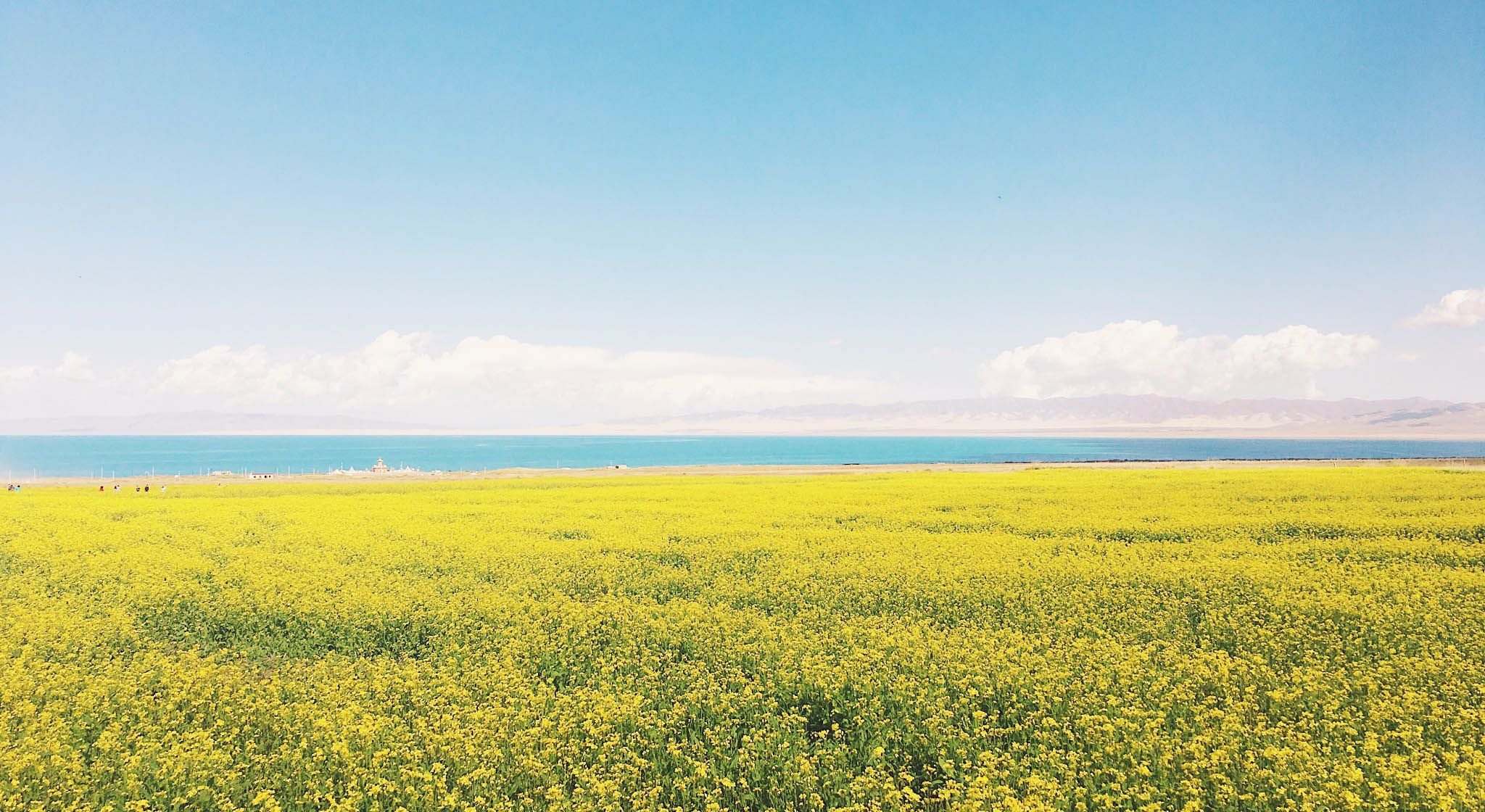
Qinghai Lake in Summer ©赵瑞鸥 / mafengwo

Heavenly Lake of Tianshan in Autumn ©Sea wind / mafengwo

Luoyang Longmen Grottoes ©ctrip

Kashgar Century-Old Teahouse ©真真 / mafengwo
A Silk Road travel itinerary can be flexibly customized according to the traveler’s departure city, personal interests, length and budget of the holiday. In any case, we always recommend that you visit more destinations, travel further and slower to make deeper contact with the ancient Silk Road.
Within 4/5 Days: Tight-schedule tourists still have many choices and the best idea is to visit two destinations on the Silk Road. If you haven’t visited Xian, then you should travel to Xian and nearby Luoyang, or visit Xian with Dunhuang, two best Silk Road destinations with remarkable cultural heritages. Or, you can explore parts of the Hexi Corridor, visit Dunhuang with Zhangye, Jiayuguan or other close destinations.
☛ 4 Days Jiayuguan Dunhuang Tour
☛ 5 Days Silk Road Tour from Xian to Dunhuang by Flight
☛ 5 Days Luoyang Xian Tour by Train
One Week: One week is enough to cover 4 destinations at a normal pace or more destinations with brief visits. The top recommendation is the route of Lanzhou-Zhangye-Jiayuguan-Dunhuang on Hexi Corridor, the essence of Silk Road. Besides, you can put Tianshui, or Qinghai Lake, Xining and other surrounding destinations on your journey. Tourists who have already visited these areas can go further to visit Xinjiang, make an efficient exploration of the top three destinations - Urumqi, Turpan and Kashgar.
☛ 6 Days Zhangye Jiayuguan Dunhuang Discovery Tour
☛ 7 Days Ancient Silk Road Treasure Tour from Tianshui
☛ 7 Days Miraculous Land Tour from Dunhuang to Zhangye Xining
8 ~ 15 Days: This is the best length of time to explore major destinations, including Xian, Dunhuang, Jiayuguan, Zhangye, Qinghai, Urumqi, Turpan, Kashgar and so on. You are free to arrange the schedule depending on your time and preference of cultural or natural spots. Just skip the same type of attractions and view the best one.
☛ 8 Days Classic Xinjiang Tour including Urumqi Turpan Kashgar Tashkurgan
☛ 10 Days Classic Silk Road Tour (Xian/Dunhuang/Turpan/Kashgar
☛ 11 Days In-depth Wild Silk Road Adventure Tour
15 Days & Above: It is most suitable for an in-depth Silk Road, visiting as many destinations as you can. Apart from the main destinations along the route, you can extend the trip to more destinations in China, like the capital Beijing, modern Shanghai, the holy land of Tibet where culture and nature are shocking and so forth.
☛ 15 Days Classic Ancient China Silk Road Tour with Bullet Train Experience
☛ 19 Days Silk Road & Tibet In-depth Tour
Envoys, travelers and adventures in ancient times took years to walk through the Silk Road journey. However, present modern technology makes travel much easier, more convenient and flexible.
By Air: Xian, Luoyang, Lanzhou, Dunhuang, Zhangye, Urumqi, Turpan, Kashgar and nearly all destinations on the Silk Road are easily accessible by flight (mostly domestic flights). And, there are some flights flying among these destinations. Capital cities like Xian, Lanzhou, Urumqi, Xining also operate a few international flights.
By Train: The Lanzhou-Urumqi High Speed Railway links many cities along the Silk Road, making a Silk Road bullet train journey very popular and convenient. You can take bullet trains to Xian, Luoyang, Lanzhou, Zhangye, Jiayuguan, Dunhuang, Turpan and Urumqi, and transfer among them.
By Private Car: To visit major attractions in a city efficiently and visit remote destinations, a road trip by private car is the best option, because public transportation is either time-wasting or involves complicated transfers. For example, you can Terracotta Warriors in the Xian suburb and other sites downtown, travel from Urumqi to Heavenly Lake of Tianshan, get from Kashgar to Tashkurgan in our safe, clean, licensed, comfortable private car and accompanied by our professional local tour guide. Airport/train station pick-up and drop-off are provided in the tour package.
In general, a flight is best for long-distance travel. A bullet train is advised to visit medium-range destinations within half a day, while a private drive is the most practical way of transferring between short-distance places.
Keep Reading: How to Get to & around Xian | How to Get to & around Luoyang | How to Get to & around Dunhuang | How to Get to & around Gansu | How to Get to & around Qinghai | How to Get to & around Xinjiang

Xian Xianyang International Airport ©Xian Xianyang International Airport

Bullet Train was Running on Lanzhou Urumqi High Speed Railway ©xinhuanet

Boutique Hotel in Xian ©ctrip
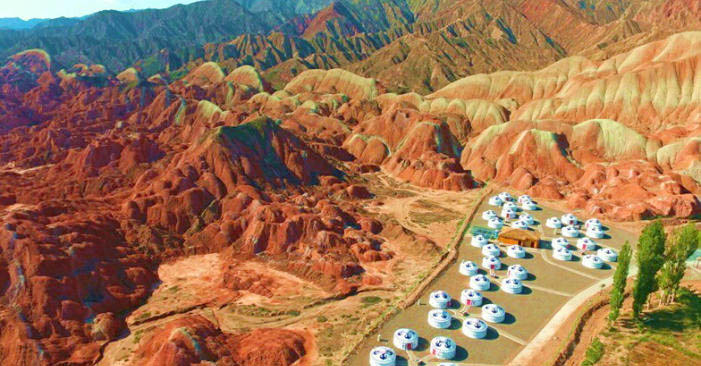
Mongolian Yurts in Zhangye Kaoshan Tent ©elong
Major cities along the Silk Road offer a large section of accommodation, ranging from star-rated hotels to budget hostels and local guesthouses. Room rates are decided by the hotel location, facilities & services, star level and whether it is in the peak season or not. Provincial capital cities, like Xian and Urumqi, have some luxury brands and 5-star hotels to choose from.
Usually, the downtown area of each city is the top recommended place to stay, because the central city has more choices of hotels, many places to eat and shop and very convenient transportation to the airport, train station and nearby tourist attractions. During your Xian tour, hotels near the Bell & Drum Tower, Muslim Quarter and inside the Ancient City Wall are the best areas to stay in. For travelers who arrive by a late flight/train, or want to catch an early flight/train, accommodation near the airport/train station helps you rest well and save traffic time.
When visiting a huge natural attraction far from the downtown city, staying in the scenic area or nearby areas is a popular choice and a memorable experience. Some places even offer featured accommodation, like ethnic yurts, local guesthouses and outdoor camping. For instance, when visiting Zhangye Danxia Landform Geopark, Kaoshan Tent near the west gate has special Mongolian yurts to stay and amazing sights of colorful rainbow mountains beside. During your Dunhuang trip, you can join a camp in the desert (Singing Sands Mountain) and enjoy a campfire party and barbecue.
Keep Reading: Xian Accommodation | Luoyang Accommodation | Lanzhou Accommodation | Dunhuang Accommodation | Qinghai Accommodation | Turpan Accommodation | Urumqi Accommodation | Kashgar Accommodation
For all travelers to the Silk Road regions, trying local foods and snacks and tasting some new flavours is a part of the adventure and fun, as well as a good way to get to know the authentic local people and culture. Major cities have common Chinese dishes and capital cities have some western foods for choice.
What to Eat? Influenced by geographical environment, regional products and religious culture, diet on the Silk Road is very rich, wild and rough, quite different from cuisines in Beijing, Shanghai, Guangzhou, Chengdu and other parts of China. Cities along the route mainly eat noodles as staple food, instead of rice. But there are many types of noodles and flavors, which vary from region to region. Mutton and beef are the most important meat dishes. Many dishes are served in huge portions. Based on local products, there are a variety of strange, interesting and delicious snacks in each destination. An important thing to know when traveling to the Silk Road is that halal restaurants and foods are very common for the widespread Islamic culture. In minority areas, they often make traditional dishes. So please always show your respect and understanding. Lots of sweet and juicy fruits will mature in summer and autumn, better have a try.
Where to Eat? The central city normally has many restaurants to eat. Moreover, it’s very easy to find places to eat in and near major scenic areas. Downtown night markets are the best places to taste various kinds of local snacks and specialties.
Tips: Bring some medicines for enterogastritis and standing drugs to avoid unacclimatization and other emergencies.
Keep Reading: Popular Food and Snacks in Xian
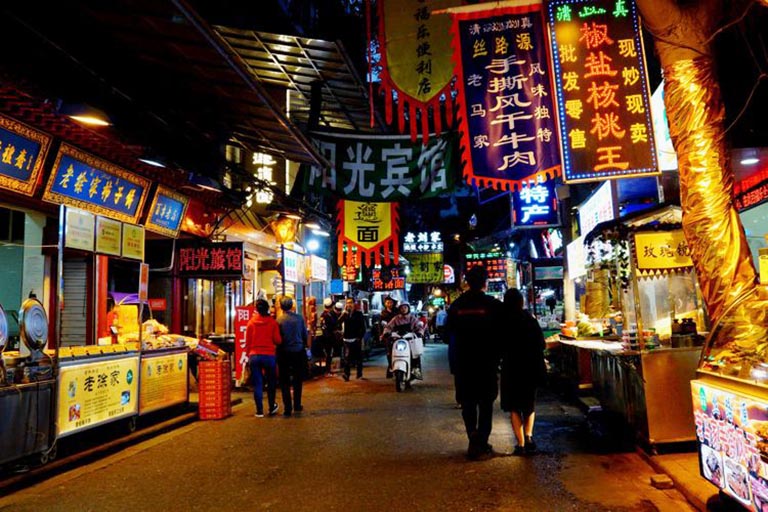
Xian Muslim Quarter ©马马虎虎 / meipian
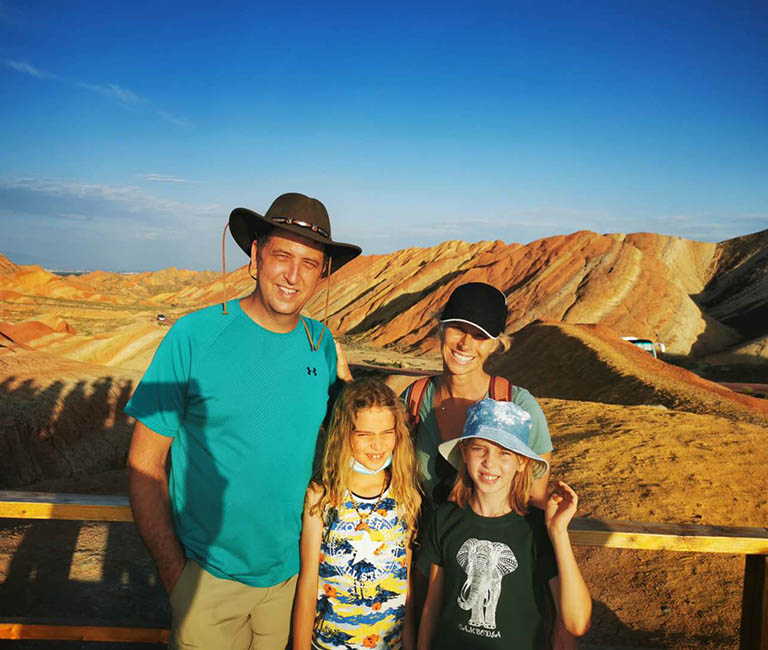
Our customers Erin family from USA visited Zhangye Danxia Geopark in Gansu in August, 2020.
Respect Ethnic Culture and Customs and Religious:
Northwest China lives many minority groups and Muslims. Therefore, travelers ought to respect and follow the local ethnic customs and religious rite taboos when visiting cultural sites and eating local cuisine.
Dress and Packing:
Tourist destinations along the Silk Road have a dry climate with strong sunshine and a huge temperature difference between day and night. So better dress in layers, prepare sunglasses, hats, sunblocks, warm clothes, comfortable shoes, moisturizing skin care products, drink enough water and eat fresh fruits and vegetables, prepare some snacks for the long drive.
About Time
All areas of China follow Beijing Time (UTC+8:00). But, the cities along the Silk Road span a large territory, the actually local time of sunrise, sunset and daylight duration are slightly different. In Xinjiang, the actual sunrise and daily activity time is 2 hours later than Beijing Time. That won’t affect your trip at all.
Keep Reading: China Silk Road Travel Advice & Tips | Xian Travel Advice & Tips | Dunhuang Travel Advice & Tips | Xinjiang Travel Advice & Tips
